Chernobyl Accident (Ukraine - 1986)
The accident that occurred in 1986 at the Chernobyl nuclear power plant in Ukraine had a profound impact on public opinion in Europe. Since then, IRSN has worked constantly to improve understanding of that catastrophe and its consequences on public health and the environment and to act to improve the safety of the sarcophagus built over the damaged reactor in 1986.
This page gives access to analysis and special contents produced by IRSN over the years.
2022

On February 24th, 2022, Russian troops invaded Ukraine on four fronts and seized control of the Chernobyl site, where 20,000 spent fuel assemblies are stored. The very next day, IRSN mobilized its emergency response organization to monitor radiation levels on Ukrainian and European territories and assess the safety of Ukrainian nuclear facilities, specifically the Chernobyl site.
News of 01 March 2022: Situation of nuclear facilities in Ukraine
News of 9 March 2022: Ukraine: Update on the risk situation regarding nuclear facilities
News of 11 March 2022: Situation at the Chernobyl site
News of 25 March 2022: Report on fires in the Chernobyl exclusion zone
2021
-

35 years after the Chernobyl nuclear accident which occurred on 26th April 1986 in Ukraine, we outline the last information of the situation on the following topics:
The Chernobyl safety of site facilities
The radioactive waste resulting from the accident
The large fires in the Chernobyl region (origins and environmental consequences)
The effects of the Chernobyl and Fukushima accidents on ecosystems
-
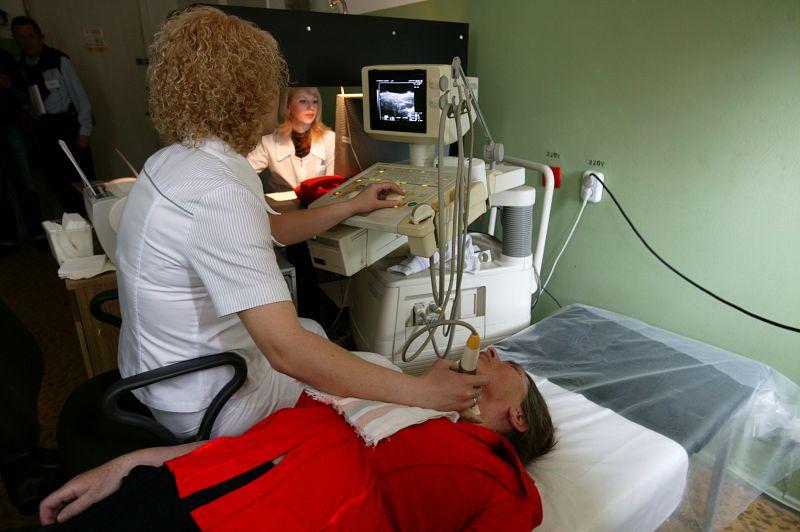
Numerous research programs and epidemiological studies were and are being conducted on the health consequences for first responders, workers, and affected populations following the accidents at the Chernobyl nuclear power plant in 1986 and the Fukushima Daiichi nuclear power plant in 2011. This in-depth feature provides a summary of these studies.
It focuses primarily on the risks of thyroid cancer in people exposed to ionizing radiation during childhood and adolescence, but also covers other types of cancer and non-cancerous effects of exposure to ionizing radiation, particularly in workers involved in these two accidents.
State of knowledge on the health consequences of a nuclear accident
2020
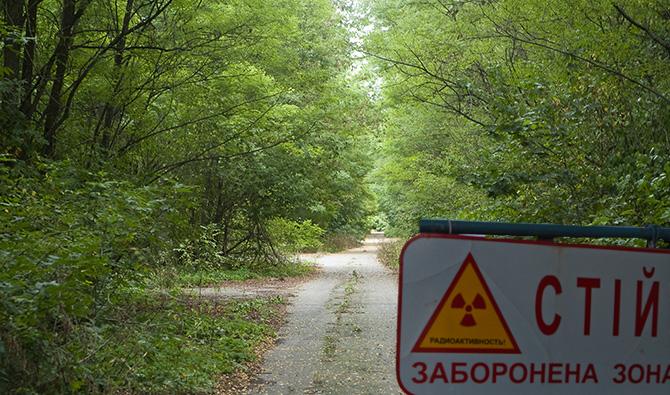
On April 4, 2020, a fire occurred in the exclusion zone around the Chernobyl nuclear power plant in Ukraine. Such an event, which has already happened in the past, could lead to the resuspension of airborne cesium 137.
IRSN has published several information reports on the situation with assessment of the consequences that the spread of potentially contaminated air masses due to these fires could have in Europe and France.
Information report of April 15,2020: Fires in Ukraine in the exclusion zone around the Chernobyl power plant
Information report of 17 April 2020: Fires in Ukraine in the exclusion zone around the Chernobyl power station: Situation report
Information report of 24 April 2020: Fires in Ukraine in the exclusion zone around the Chernobyl power plant: First results of 137Cs measurements in France
Information report of May 05, 2020: Fires in Ukraine in the exclusion zone around the Chernobyl power plant: latest news and summary of consequences
IRSN also produced modeling of the trajectories of the fire-contaminated air masses.
2018
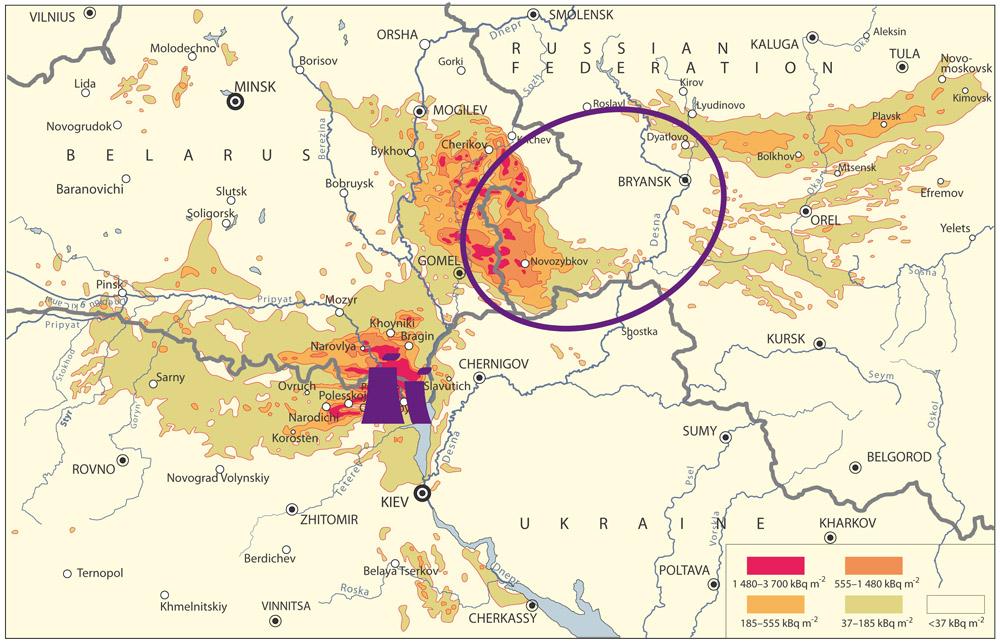
Between 2005 and 2019, the EPICE research program led by IRSN studied the non-cancerous effects that may result from exposure to low doses of ionizing radiation.
IRSN set up two epidemiological studies to collect scientific data with the aim of answering a social question regarding the health consequences of the Chernobyl nuclear accident among a sensitive group (children). These studies were conducted in Russia's south-western region of Bryansk, which includes both caesium-137contaminated areas and uncontaminated areas, in collaboration with the Clinical Diagnostic Center (Bryansk), as well as local schools and hospitals.
The result of the study did not observe an association between cardiac arrhythmia and caesium-137 deposition levels on children living in the Bryansk region exposed to Chenobyl fallout.
More information: news report of 09/04/2018
2013
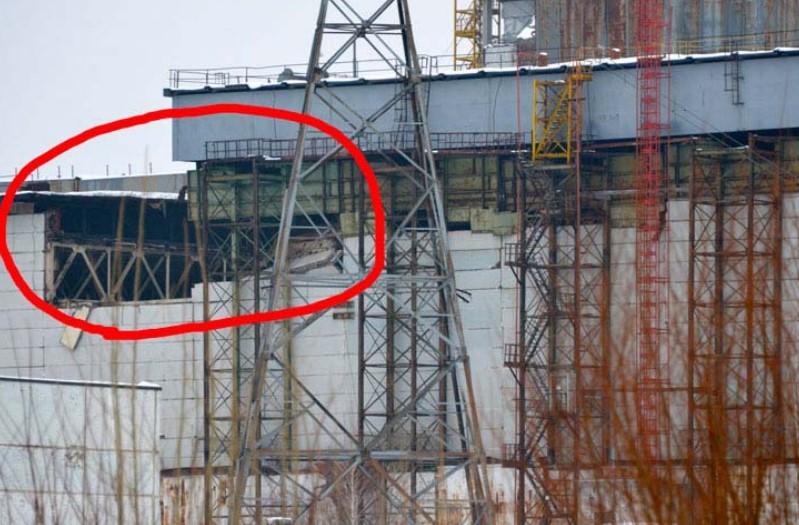
On February 12, 2013, a roof and a section of wall of the turbine hall of the Chernobyl reactors collapsed. IRSN publishes an information note about this event which, given the available evidence, has no impact on the environment.
Information report of 14 February 2013: Information regarding the partial collapse of the roof over the "turbine hall" of the Chernobyl reactors
2011
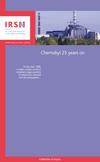
In 2006, to mark the 20th anniversary of the Chernobyl accident, IRSN produced an information booklet providing an overview of the situation at the site and of environmental contamination.
This booklet was updated in 2011, to mark the 25th anniversary of the disaster.
2007
Produced in 2007, this video explains the measures in radiation protectio decided by the Norwegian autorithies after the Chernobyl accident.
2005-2006
-
In 2005, IRSN produced a simulation of the path travelled across Europe by the radioactive cloud folowing the Chernobyl accident.
This simulation was produced using a new generation of operational atmospheric dispersion models developed for use in case of nuclear emergency. To qualify this new long-distance dispersion model, IRSN experts applied it to the atmospheric release of caesium-137 caused by the Chernobyl accident, based on a reconstruction of the meteorological conditions observed in Europe in the days following the accident. The model calculated the distribution of air contamination at ground level on a European scale at 15-minute intervals, from 26th April to 10th May 1986. The computed results were then compared with actual measurements taken throughout Europe over the same period, showing satisfactory agreement between calculations and measured data.
This simulation is now proposed in a commented version (french voice over with english subtitles) with explains the path of the radioactive cloud over Europe between 26th April and 6th May 1986.
Discover the path travelled by the radioactive cloud in the model-generated image depicting caesium-137 activity concentration over Europe between 26th April and 6th May 1986 :
© IRSN - 2015 -
- The radioactive particles released during the explosion of the reactor were blown over thousands of kilometers by the wind
- Air contamination levels were significantly different depending on the geographical area and changed rapidly between 30 April and 5 May 1986
- The deposition of radioactive particles is enhanced during rainfall
- Deposition across France, and throughout Europe, is highly uneven
- Contamination of foodstuffs was determined by the date of the accident and deposition characteristics
- After deposition, the contamination level of farm produce fell at variable rates
- Since 1987, the contamination of farm produce has fallen faster than the radioactive decay of caesium
- Special cases concerning more sensitive products
- Mean doses received by the French population from the Chernobyl accident were low
- In France, the issues raised about how the accident affected health concern thyroid cancer
-
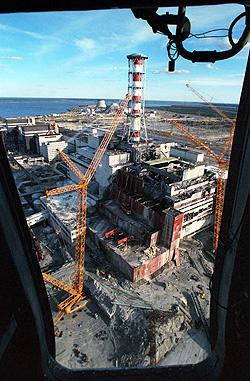
The franco-german initiative for chernobyl is a scientific and technical program launched in 1996 by France and Germany in cooperation with Ukraine, Belarus and Russia.
Its main aim was to help collect and validate existing data on the accident, in order to build up an information base useful for counter-measure planning, public information and subsequent scientific work.
Three themes were selected for study: the safety of the sarcophagus, the impact of the accident on the environment, and the health of the populations affected.
Programme 1: Safety of the sarcophagus
-
In April 2005, the French Ambassador to the Belarus Republic called on the IRSN to undertake an all-inclusive appraisal of the effectiveness of pectin and the usefulness of using it in areas contaminated by radioactive fallout from the Chernobyl accident.
IRSN’s approach started by conducting a critical bibliographical analysis of the scientific and technical arguments posited to date on the subject of pectin, to clearly identify any controversial issues and gaps in knowledge as to its use as a dietary supplement in the cesium-contaminated districts. Furthermore, this analysis not only looked into the role of pectin on cesium but also its other uses in man, in order to gather a coherent set of data.
It emerges that this literature search does not settle the question of pectin’s role in dealing with cesium-137 contaminations. No judgement can be made for or against its role for this indication from the documents analysed. The necessary data for appraising the role pectin’s potential role for children living in areas contaminated by the Chernobyl nuclear power plant’s releases can only be provided by experimental studies on animal models and clinical studies.
